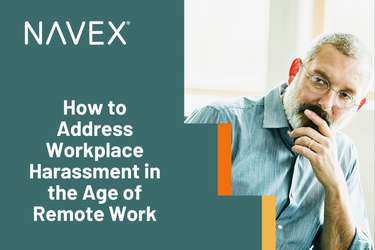Sexual harassment in the workplace is not new. What is new is the way sexual harassment scandals come to light, how it is addressed and prevented (or not), and the media attention many harassment allegations are able to generate. This is largely due to the importance and momentum of the #MeToo movement.
The context to achieve this goal, however, has changed with enough significance that we need to be more aware moving forward.
For ethics and compliance professionals, indeed for any organizational leader, the goal is still the same – stop and prevent sexual harassment in the workplace. The context to achieve this goal, however, has changed with enough significance that we need to be more aware moving forward. As you work to create a stronger culture and harassment-free workplace, consider the seven lessons below culled from previous Ethics & Compliance Matters™ articles.
-
People are speaking out rather than speaking up.
More employees feel empowered and emboldened to demand a workplace free from sexual harassment. For the most part, employees still prefer to report internally. But they are increasingly motivated to speak out externally if their complaints are ignored. Think social media posts. Compliance professionals need to work on preventing sexual harassment while also cultivating a strong, internal speak-up culture to identify and resolve issues quickly. Read more.
-
Young people are making discrimination and sexual harassment a board issue.
Millennials and Generation Z demand civility in the workplace and have a healthy appetite for activism. Young people have been told they can change the world, and they believe it. When regulatory or corporate authorities fall short, they are willing to take matters into their own hands to create the change they believe is necessary. Read more.
-
Four roles to consider in the prevention of sexual harassment.
Eliminating sexual harassment in the workplace, however, requires us to consider two additional types of employees and their respective roles for prevention: bystanders and leadership.
Too often, we only focus on the harasser and the person targeted by the harassment. Eliminating sexual harassment in the workplace, however, requires us to consider two additional types of employees and their respective roles for prevention: bystanders and leadership.
- Perpetrators: must be held accountable for their actions and their behavior must be appropriately addressed. If not, the interpretation will be that harassment is implicitly tolerated because there are no consequences.
- Targets: must be supported, never retaliated against or prejudged.
- Bystanders: should feel a sense of ownership for workplace culture and be empowered to step in and speak up.
- Leadership: must model the culture they expect and their employees deserve. Read more.
-
Neglect of power can be as bad as abuse of power.
Sexual harassment is not just a compliance issue, it is an abuse of power issue as well. It can also be a neglect of power issue. Pervasive sexual harassment in the workplace is what happens when good people in power stand by rather than intervene. Read more.
-
Sexual harassment is becoming a corporate governance issue.
In his annual letter to CEOs, Larry Fink, chairman and CEO of BlackRock, the world’s largest asset management company, stated: “In the current environment, these stakeholders are demanding that companies exercise leadership on a broader range of issues. And they are right to: a company’s ability to manage environmental, social, and governance matters demonstrates the leadership and good governance that is so essential to sustainable growth, which is why we are increasingly integrating these issues into our investment process.” Read more.
-
Environments that permit harassment, stifle performance.
Group efficacy improves with heterogeneity. The best corporate decision-making processes pull from a variety of ideas, experiences and perspectives. Sexual harassment is antithetical to inclusiveness and creates workplace cultures and group environments where individuals and new ideas are shut down explicitly or implicitly. Read more.
-
Multinational organizations need to understand global and regional cultures.
In any organization, especially multinationals, a number of subcultures exist. These can be defined by location, age, tenure, departments and even one-on-one dynamics. What triggers sexual harassment for one group may not even register for another. We need to go beyond a single best practice and instead test multifaceted approaches that prevent bad behavior enterprise-wide. Read more.
This blog is part of the You Can't Delegate Ethics campaign. The campaign posits that systemic change on the issue of sexual harassment will occur only when good people in power take responsibility for the issue and create workplaces that do not tolerate it.









